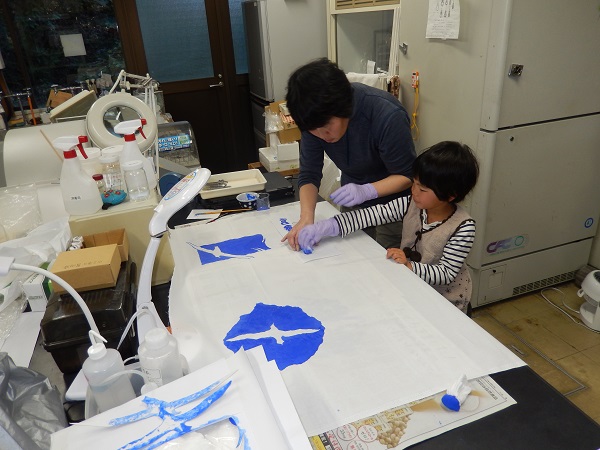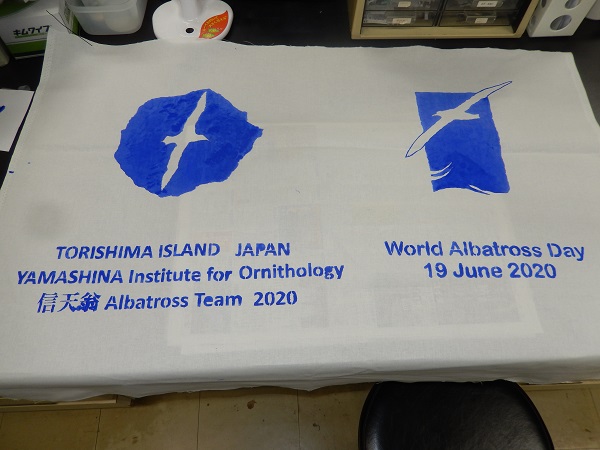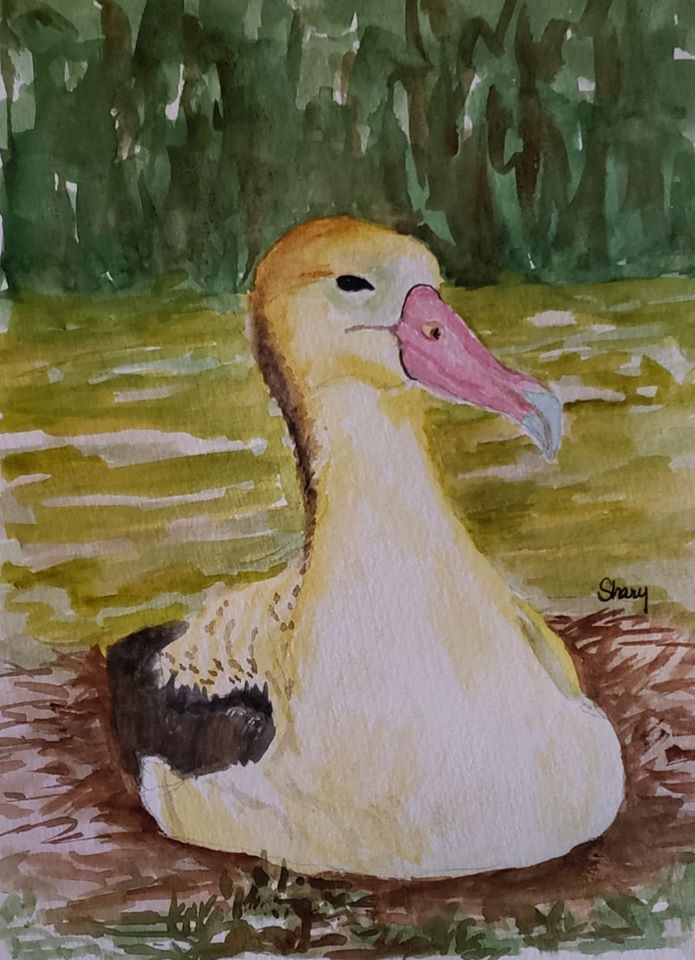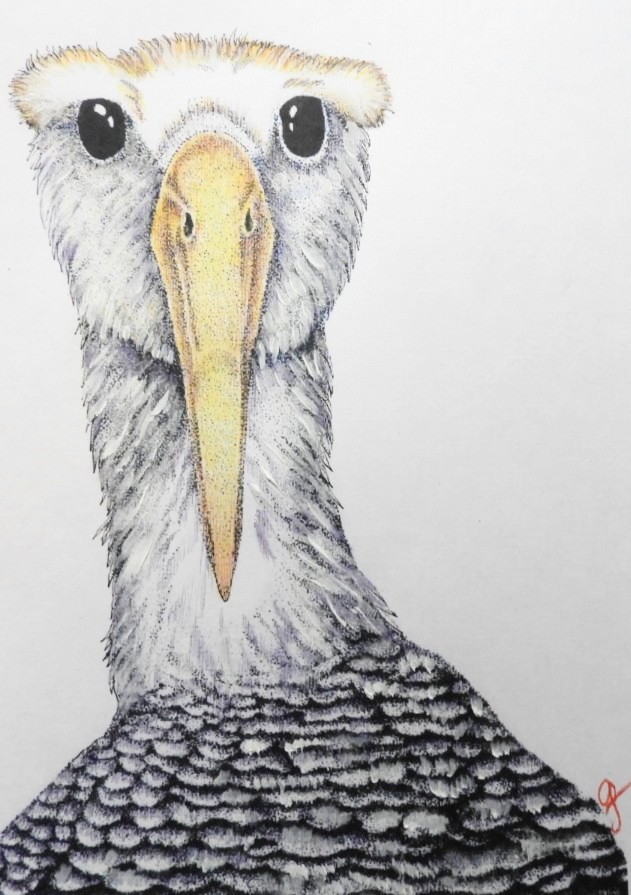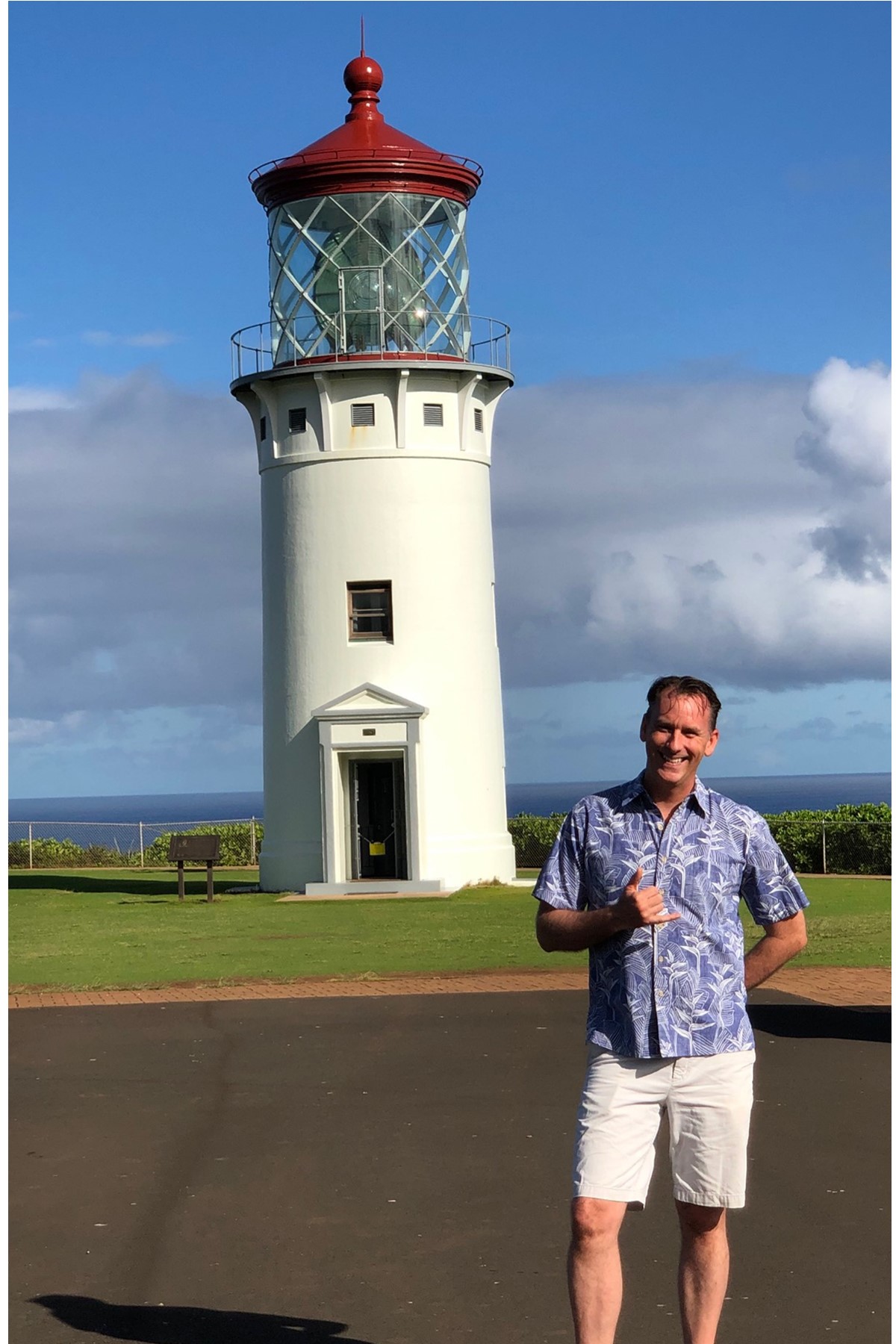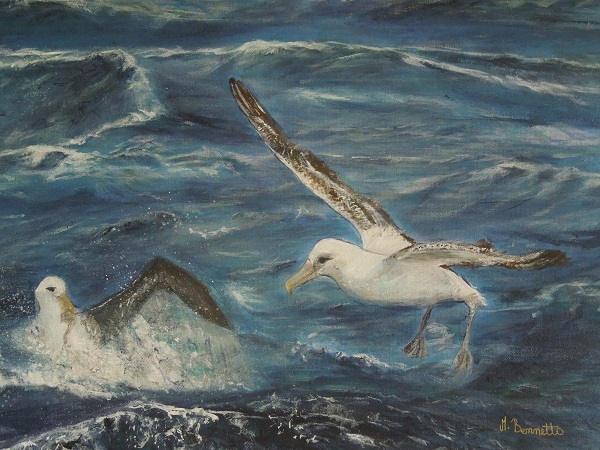
Wandering Albatrosses at sea, by ABUN artist Maureen Bennetts, from a photograph by Dimas Gianuca
Jonathan Handley (BirdLife International, Cambridge, UK.) and colleagues have published open access in the journal Diversity and Distributions on using predator tracking, including of seven species of ACAP-listed albatrosses and petrels, to test the efficacy of a large Marine Protected Area.
The paper’s abstract follows:
“Aim
Marine protected areas can serve to regulate harvesting and conserve biodiversity. Within large multi‐use MPAs, it is often unclear to what degree critical sites of biodiversity are afforded protection against commercial activities. Addressing this issue is a prerequisite if we are to appropriately assess sites against conservation targets. We evaluated whether the management regime of a large MPA conserved sites (Key Biodiversity Areas, KBAs) supporting the global persistence of top marine predators.
Method
We collated population and tracking data (1,418 tracks) from 14 marine predator species (Procellariiformes, Sphenisciformes, Pinnipedia) that breed at South Georgia and the South Sandwich Islands, and identified hotspots for their conservation under the recently developed KBA framework. We then evaluated the spatiotemporal overlap of these sites and the different management regimes of krill, demersal longline and pelagic trawl fisheries operating within a large MPA, which was created with the intention to protect marine predator species.
Results
We identified 12 new global marine KBAs that are important for this community of top predators, both within and beyond the focal MPA. Only three species consistently used marine areas at a time when a potentially higher‐risk fishery was allowed to operate in that area, while other interactions between fisheries and our target species were mostly precluded by MPA management plans.
Main conclusions
We show that current fishery management measures within the MPA contribute to protecting top predators considered in this study and that resource harvesting within the MPA does not pose a major threat—under current climate conditions. Unregulated fisheries beyond the MPA, however, pose a likely threat to identified KBAs. Our approach demonstrates the utility of the KBA guidelines and multispecies tracking data to assess the contributing role of well‐designed MPAs in achieving local and internationally agreed conservation targets.”
With thanks to Richard Phillips.
Reference:
Handley, J.M., Pearmain, E.J., Oppel, S., Carneiro, A.P.B., Hazin, C., Phillips, R.A., Ratcliffe, N., Staniland, I.J., Clay, T.A., Hall, J., Scheffer, A., Fedak, M., Boehme, L., Pütz, K., Belchier, M. & Boyd, I.L. & Dias, M.P. 2020. Evaluating the effectiveness of a large multi‐use MPA in protecting Key Biodiversity Areas for marine predators. Diversity and Distributions DOI: 10.1111/ddi.13041.
John Cooper, ACAP Information Officer, 24 April 2020

 English
English  Français
Français  Español
Español 
